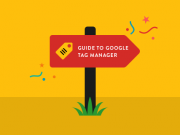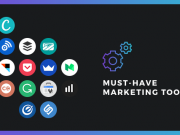
Remarketing is a common and useful marketing technique for marketers to target customers who have left without making a purchase, including those who abandon their carts. Remarketing can be very effective, but only if you do it right. If you do it wrong, at best you’ll get a poor ROI for your remarketing campaigns, and at worst you will annoy your customers and devalue your brand.
First, we’ll briefly examine what remarketing is, and then we’ll take a look at four ways that you can ensure your remarketing campaigns are up to scratch, both from a customer perspective and a legal one.
What is Remarketing?
Remarketing is a broad term that is used for a number of different marketing techniques that all aim to bring visitors back to your website to make a purchase.
In an ideal situation, it would be only used for visitors who came to your website and did not make a purchase already, or those who abandoned their carts. Remarketing is done in two main ways: ad remarketing, and email remarketing.
One of the most common ad remarketing tools is Google AdWords Remarketing, and email remarketing is often done in situations of cart abandonment, where a follow-up email is sent to the customer to remind them that they have items they can check out. Remarketing is also called “conversion marketing” or “cart abandonment email marketing.”
Ad Frequency
First, one of the most important things you need to be careful of is the frequency that you show your ads or send your remarketing emails. Sending follow-up emails too frequently can be annoying and ‘spammy’ for your customers, and they won’t be particularly endeared to your brand.
Showing ads to customers extremely frequency can come off as ‘creepy’, and customers may feel like they are being followed. You want to find the balance between showing enough ads to your customers that they are made aware of your brand again, but not so many that it overwhelms them.
The question of just how many ads you should show to visitors to your site will bedifferent depending on a number of factors. Different stores and brands will be able to hold up against different ad frequencies, and campaigns will differ in their conversion goals which will also affect your choice of frequency setting.
One key thing you need to do is test how your frequency caps are performing in the real market: does a higher cap bring in a higher ROI, or does it turn people away past a certain point? You can view your own Reach and Frequency report in your Google AdWords dimensions tab, which will help you determine what frequency cap you should set. Here’s an example from Search Engine Land that shows a potential conversion rate and click-through rate for different ad frequencies:
You can see in the example above that the CTR slowly decreases as you increase the number of ads, but at certain points there is a ‘spike’ in conversions (i.e. at 6 ads shown). As this is just one snapshot of data it’s hard to determine real trends, but it does seem like the spike at frequency 6 is more of an anomaly than an overall trend. Better conversion rates were seen at ad frequencies of 1, 2, 3, and 4, with negligible differences in conversion, but better CTR at lower ad frequencies. This may indicate that spending more money paying for higher frequencies is often not worth it.
Custom Advertising
Another important aspect of your remarketing campaign to consider is using custom messages and advertising methods for different groups. Segment your audience to target customers more effectively is a powerful tool in making the best use of your remarketing efforts and budget.
There are a number of different ways that you can segment your customers into groups, such as spending patterns, gender, location, age, or socio-economic group. The key thing to focus on is ensuring that you are not just segmenting for the sake of it; ensure that you split your customers up into groups that make sense in terms of categories that affect buying behaviour. There’s no point splitting your customers into men and women if your data shows that their buying behaviour for your product is the same.
The main benefits of customer segmentation are that you can identify which customer categories are the most and least profitable, and you can also work out specific marketing techniques for each group. This allows you to spend resources more wisely, and in a more targeted manner so that unsuitable marketing campaigns don’t waste funds on groups who aren’t interested.
Privacy Laws
For conducting a high-quality marketing campaign, it’s crucial to make sure that you are compliant with any privacy laws that apply to your situation. To conduct a remarketing campaign, any program or system that you use will collect a piece of the user’s data such as their IP address, location, or tracking the user by use of cookies via their web browser.
Any time you collect the personal information of a visitor to your website, you may be subject to privacy laws that require you to disclose certain things to your user. There are also cookie laws in place in many jurisdictions that cover how you can use cookies and in what circumstances you need to get user consent.
In the US, the most comprehensive online data privacy law is the California Online Privacy Protection Act (CalOPPA). CalOPPA requires that when you are collecting the data of California residents via a website or by way of an online service, you must display a privacy policy prominently and clearly for your users to access it.
Your privacy policy for the purposes of CalOPPA is required to cover a number of clauses. You must:
- set out what information you are collecting
- provide the effective date of the agreement
- explain how you deal with “do not track” requests
- explain how individuals can make changes to the data you hold on them
- cover how you will notify individuals of changes to your Privacy Policy
- state whether any third parties will be collecting user data via your website or service
If you are collecting data from US residents generally as part of your remarketing campaign, it is likely that some of them will be from California. As a result, if you remarket to any US residents, you should ensure that your privacy policy is compliant with CalOPPA requirements.
In the UK and EU, the law will be covered in the near future by the EU General Data Protection Regulation (GDPR). The GDPR is intended to be a comprehensive and overarching law that unifies the data protection rules for the entire EU. The GDPR also has requirements for what your privacy policy must contain if you are collecting the personal data of EU citizens. The GDPR’s requirements are far-reaching, and thepenalties for non-compliance are strict.
In 2012, the Court of Justice of the EU held that an IP address is personal data for the purposes of the EU Data Protection Directive, which is the law that is currently in force and is preceding the GDPR. It is likely that this will continue to stand under the GDPR as much of the focus of the GDPR is on consumer protection and protection of online privacy.
The GDPR’s requirements are that your Privacy Policy must cover:
- Your identity
- A statement that you will collect and use personal data fairly and only for stated purposes
- What information you are collecting
- How customers can keep their personal data up to date
- Your contact details as well as the details of your Data Protection Officer
- How long you will keep data for
- How the customer can access the data
- The contact details of the supervisory authority
- Whether the data will be transferred outside of the EU, and if so, where it is going and how well it will be protected
The GDPR also has a number of other requirements, such as appointing a Data Protection Officer to ensure that your business is kept internally compliant and an EU representative if your business collects the data of EU citizens but has no presence in the EU.
In addition to these laws, you will also need to follow any rules set out by your remarketing tool provider. For example, Google AdWords Remarketing has its own set of requirements for what you must cover in your privacy policy. These are as follows:
- An appropriate description of how you’re using remarketing or similar audiences to advertise online.
- A message about how third-party vendors, including Google, show your ads on sites across the Internet.
- A message about how third-party vendors, including Google, use cookies to serve ads based on someone’s past visits to your website.
- Information about how your visitors can opt-out of Google’s use of cookies by visiting Google’s Ads Settings. Alternatively, you can point your visitors to opt out of a third-party vendor’s use of cookies by visiting the Network Advertising Initiative opt-out page.
While it may look daunting, many requirements in different jurisdictions overlap and complement each other. When your business collects personal data of your users, it always pays to seek legal advice at the outset to ensure you are aware of what your legal obligations are and what you can do to meet them.
Don’t Waste Remarketing Efforts
Finally, make sure you don’t waste your remarketing efforts by targeting customers who have already made a purchase or signed up to your mailing lists. Spending money remarketing to these existing customers is often ineffective at prompting additional conversions because in many cases the customer has no need for more of your product at that time.
Another way that your remarketing efforts could be potentially wasted is by not including an effective call-to-action in your advertisement or email.
Any customers that you remarket to need to be prompted to return by some encouragement or enticement.
For example, if a customer leaves your website with items in their cart, sending a follow-up remarketing email with a code for a 10% discount might be enough to encourage them to return and make the purchase. If you don’t include any call-to-action or enticement to return, your email or advertisement may come across as annoying and nagging rather than a positive step towards building a customer relationship.
Take a look at this example of email remarketing from Cute Dose:
You can see in the example that it is humorous, has an eye-catching image, and provides a discount code to entice customers to return to their cart and check out. This is an excellent example of effective email remarketing that has a positive approach and a clear message.
Conclusion
Remarketing is an excellent way to jog your potential customers’ memory about their interest in your product. After all, they did already visit your website and potentially even considered making a purchase, which is the first hurdle to overcome.
Be sure to set up your remarketing campaign with limited frequency for ad display, custom advertising for particular groups, effective messaging and calls-to-action. Doing this in line with privacy laws is another crucial step towards making the most of your business offering and potential customer base.















![[Updated] Recommended sizes of social media ads](https://marketing-tools-ideas.com/wp-content/uploads/2016/06/1-1-180x135.jpg)








